TRIMUI has recently released the TRIMUI Smart console, which is yet another micro console to hit the retro gaming scene. Thanks to Gogamegeek for providing me with the handheld for review purposes.
I have to admit I had not heard of Trimui prior to Gogamegeek contacting me about the Smart. Though there is a decent fanbase to the company after they previously released the TRIMUI Model S, which was a transparent micro console.
The size of the TRIMUI SMART is around the size of a credit card and is neat enough to slip straight into your pocket. Whilst small in size, it feels really well made for a micro console, and it is comfortable to use with a fairly decent screen.
Whilst the specs of the TRIMUI SMART may not be as powerful as the larger handhelds on the market, it’s not meant to be. Micro consoles are all about portability whilst still being able to play most games on platforms well up to PS1 (sorry guys, there are no PSP or N64 games here). This allows the SMART console to be an affordable option focusing more on portability.
Most people will compare this with the Miyoo Mini. Whilst the Miyoo was vertical, the SMART is horizontal in design. It was also a great quality product.
So, looking at the specs of the TRIMUI SMART:
- CPU: Allwinner S3
- RAM: 128MB of LPDDR3
- Screen: 2.4-inch IPS, 240×320
- Operating System: Linux
- Storage: 8GB internal with MicroSD slot
- Connectivity: 2.4Ghz Wi-Fi, Bluetooth 4.0
- Charging: USB-C
- Battery: 1000mAh (around three to five hours per charge)
- Size 110mm by 58mm by 15mm
Specs-wise, the TRIMUI SMART is able to play entry-level retro games. As I mentioned before, up to PS1 is possible, though don’t expect massively demanding games from that era to play well. However, the PS1 games that came included (14 in total) played very well indeed. The likes of Sega and Nintendo Systems, as well as PC Engine games, all played as expected.
So, what platforms and games come pre-installed with the TRIMUI SMART? Gogamegeek sent me the 32GB version, which comes with 6,575 games. Platforms covered are: Arcade, NEO, FC, SFC, MD, GG/MS, GBA, GBC/GB, PCE & PSX. So overall, you get quite a few platforms to choose from for such a small, portable device.

Looking at the console itself, you get the typical A, B, X, Y buttons, D-pad and then along the bottom the Select, Menu and Start buttons. On the top edge, you get the left and right shoulder buttons. There is also a small speaker on the right, just below the face buttons, as well as a micro SD card slot, USB-C charging port and a very small On/Off switch.

As I mentioned earlier, build quality is fairly solid, and whilst being a micro console, the TRIMUI SMART still has a little bit of weight to it and does not feel cheap at all. I’m always a little worried about being able to play for extended periods of time on these micro consoles, usually because I tend to get cramps in my fingers. However, as the RTIMUI SMART is slightly larger than some of the other micro consoles I have reviewed, I didn’t have this issue this time around.
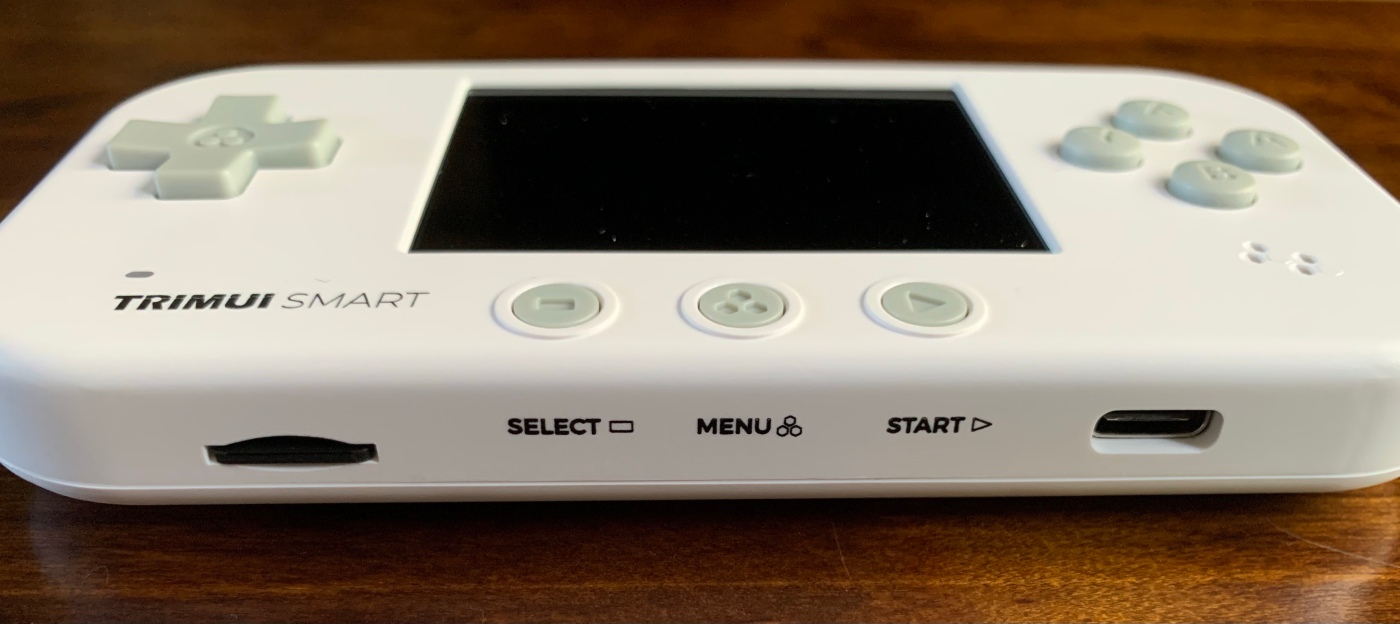
All of the buttons are clicky, as is the D-pad as they don’t have a rubber membrane underneath them, which is a shame, but it isn’t a big deal. I found everything to be responsive enough throughout my play time.
Sound quality is good, even though the console only has one small speaker to the bottom right. I was really surprised by how loud the TRIMUI Smart could be with not a great deal of distortion at top levels.
Upon switching on the console, you are greeted to the TRIMUI boot screen, which very quickly changes to the main home screen, all within around 7 secs. From there you have a number of icons showing, Retrogame, App, File, Settings, Activity, Playlist and Favourites. All are self-explanatory, though there are no apps pre-installed, which I was surprised to see.

Apparently, there will be a number of updates made available in the future, though when I connected to the Wi-Fi, there were no current updates available. In fact, I couldn’t see within the settings where I had to go to check on any available updates.
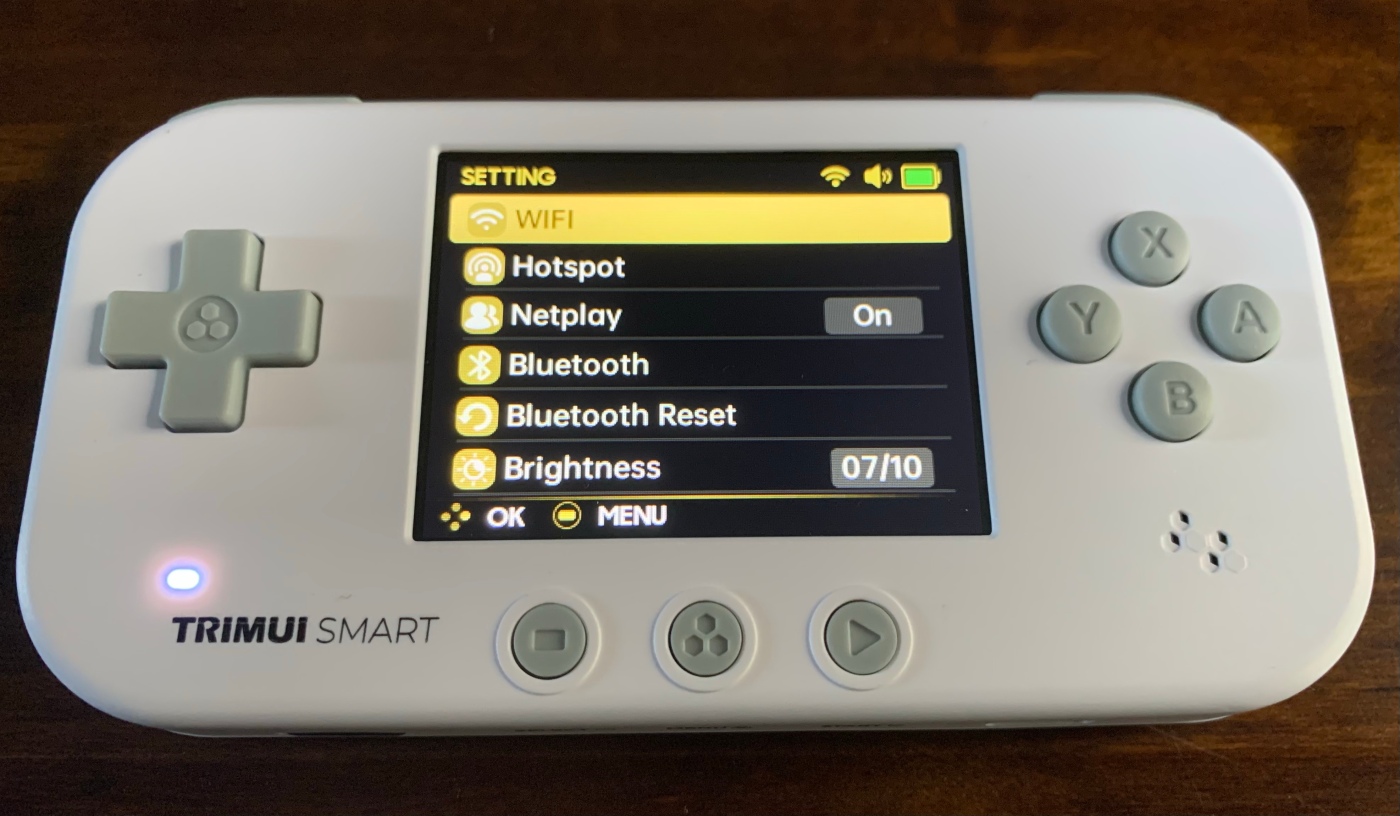
Talking about settings, when you go to them, you will notice that you can connect to Netplay, as well as use the SMART as a hotspot. This is useful so that you can play against others who may have the same console. You can also connect Bluetooth headphones to the console too, which you will need to do if you want to listen through headphones.
You can also change the CPU frequency too, which will help give the SMART a little more power if you find some of the PS1 games a struggle to play.
Within the Retrogame folder you will find all of your systems and a little icon for each one. This I liked a lot as it was clean and simple to understand. Click on one of the symbols, say, the CPS1 folder, and you are greeted with a list of games. Unfortunately, there is no artwork available for any of the games, though if you press the right D-pad, it does take you to where the artwork would normally be, but this was blank for me.

Looking at the list of games, there is certainly plenty on offer here for such a small handheld. One of my favourite games is Advance Wars for the GBA, and I was so pleased to see it included in the playlist. Whilst the screen may only be 2.4 inches in size, the image quality was bright, and all of the text was clear.
Whilst in a game, you can press the Menu button to have a side panel appear with a number of additional options, including save and load states, volume and advanced options. This option takes you into the backend, which appears to be a slimmed down version of RetroArch. This allows you to change multiple settings, including screen ratio, frame-skip, colour correction and even activate cheats if available.
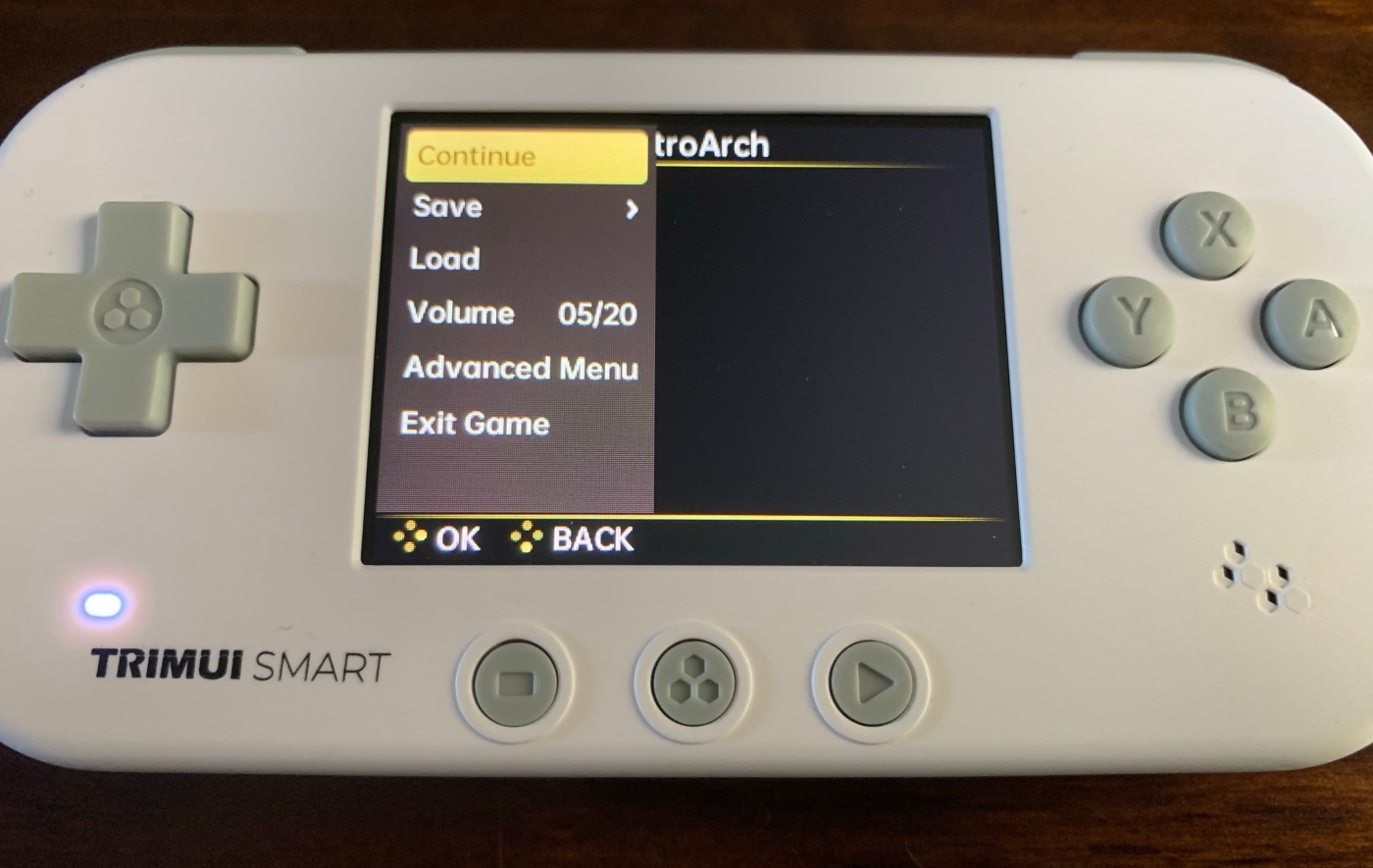
It also allows you to access the Online Updater for RetroArch so that you can keep all of the cores up to date, as well as download those missing thumbnails, though for some reason, I couldn’t get that part to see any of my games.
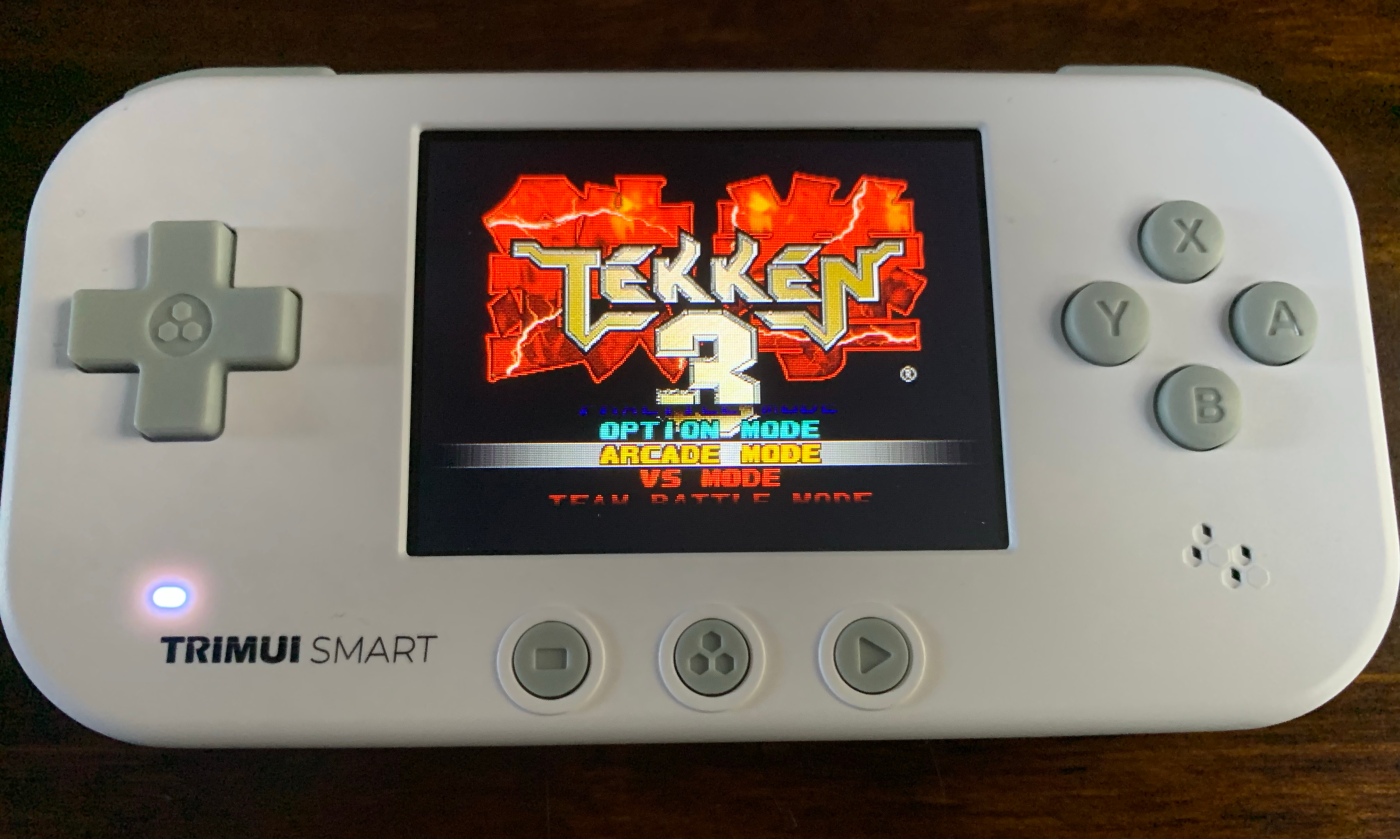
When it comes to gaming, the SMART is a very capable device and works really, really well. In fact, I was surprised by how well it did work, especially as TRIMUI was not a brand I was familiar with. The only slight bit of slowdown that I came across was when playing the PS1 game Bloody Roar, but this was to be expected, and it wasn’t enough to make the game unplayable. But everything else I chucked at the SMART played perfectly.
One of my favourite arcade games is Cadillacs and Dinosaurs, and this also played very well on the SMART. The fact that you can even pause and save your gameplay was great as I often find myself having small bouts of gameplay on these handhelds when sat around waiting for appointments or in a cafe.
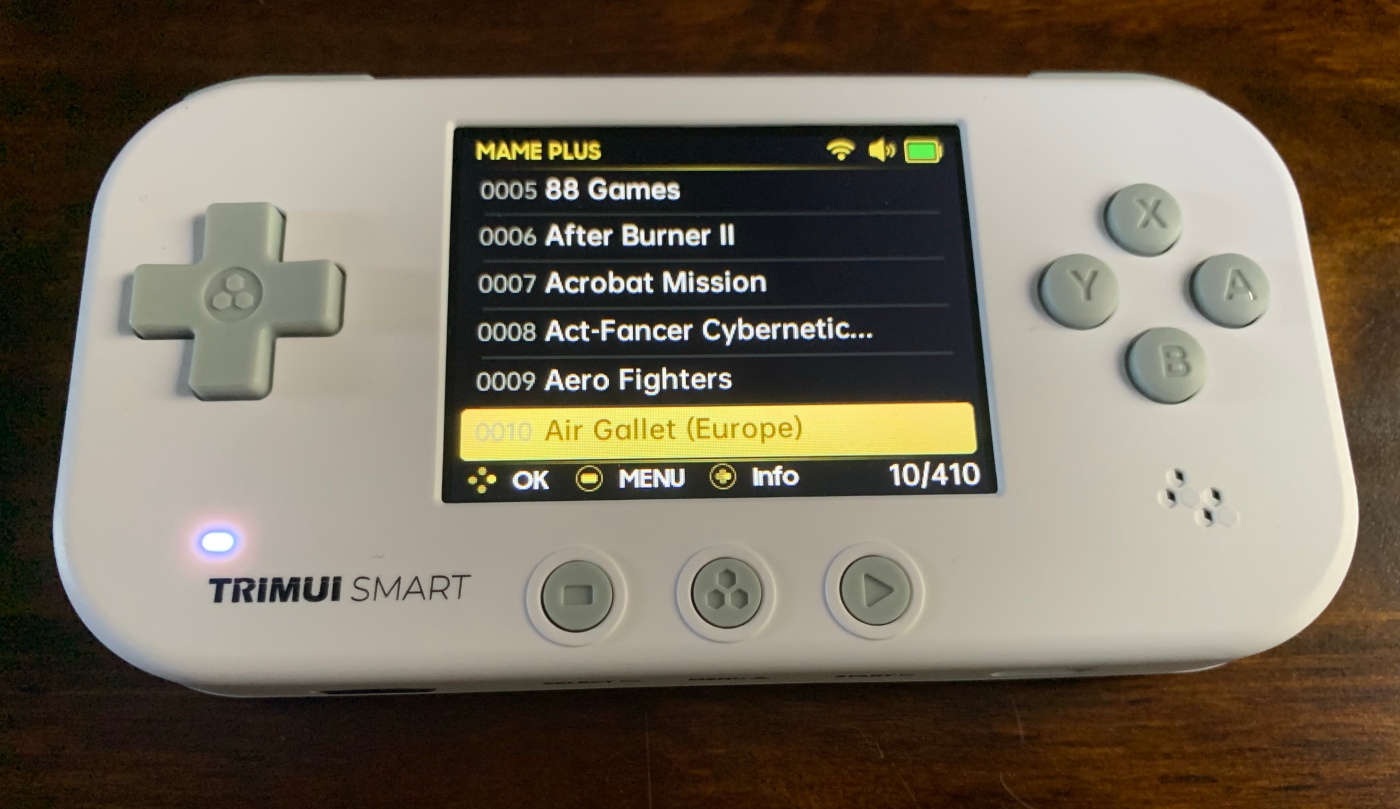
Battery-wise, I was getting a good 3.5 hrs. of play time before I was having to consider charging the console, which in my opinion, for such a small handheld, was fairly decent. One thing I did find to be very annoying was the music playing on the main menu screen. Even after turning it down within the settings, it would increase again when I came out of a game. However, within the settings, it still showed the music as being turned down. Hopefully, this will be resolved in a future OTA update.
So overall, I was very impressed with the TRIMUI SMART. It’s well made, very portable and easy to use. Image quality was bright, clear and ideal for this size of device. The number of games included gave me plenty of choice and had some of the best and most popular arcade games available.
It will be interesting to see what updates are available over the coming months as there is also promise of a games market that will add even better value for money. Gogamegeek sells the TRIMUI SMART for $79.99, which in my opinion, is good value for money.



